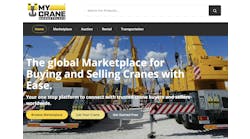In this economy, rental businesses are leaving no stone unturned in the push for inventory utilization. When demand for traditional rentals declines, innovative thinking must prevail. Some of the larger rental companies have found ways to supplement their revenue with asset management and site support services for customers.
There is nothing stopping small to mid-size rental operators from pursuing a similar strategy of value-added services. In most cases, all the ingredients are at hand, including the key ingredient — rental management software.
Challenge yourself to look at your inventory and labor differently
Maytag Corp.'s decision to create an appliance services operation in 2003 is a good example of an equipment business that looked beyond its product offerings. Maytag initially focused on repair and maintenance of its own appliances, but soon expanded its expertise to include other brands.
Rental businesses with as few as two or three certified mechanics could consider using their rental software to offer repair and maintenance as standalone services. This is easily done by quoting, scheduling (reserving) and “renting” service labor just as you would inventory.
Each mechanic can be listed in the system as an inventory item with an hourly rate. If your software has a “kits” function, you can also create a kit rate for various types of service — for example, bundling your mechanic's labor rate with the rate for a diagnostic machine.
Find new ways to utilize your own equipment
Shop services aren't the only option for making more money from existing assets. Over more than 30 years in the industry, I have seen rental businesses take some very innovative routes to equipment utilization. Following are a few examples.
Some rental companies advertise a service of putting up and taking down holiday lights on commercial and residential properties. This brings in revenue from the rental of the lights and décor (unless the customer supplies them), the aerial work platform or boom, and the operator.
In this example, the equipment is being self-utilized by the rental company as part of a service offering. The customer pays a single fee for the service, which the rental software applies between labor and equipment. The integrity of the inventory records is maintained — availability, utilization and ROI — and idle equipment earns money in a slower season.
I've also heard of equipment rental businesses marketing asphalt-cutting and trenching services to municipalities and utility companies. This is another way to boost utilization of existing inventory: in this case, backhoes and cutting saws with operators.
In the non-commercial end of the spectrum, consider what kind of service homeowners in your area might need. For example, a customer who has had loads of loam delivered to his property will need to have it spread, but may not want to rent and operate a skid-steer loader himself. This service is ideal for a rental company in a suburban location.
The risks and rewards of providing any kind of service that utilizes your rental equipment should be carefully weighed in advance. Depending on your customer base, you could be competing against your own customers for short-term gain. The ideal service is one that is off the radar of your customer base (the holiday lights, for example), but any service is worth considering if the profit potential is strong enough.
A word of caution about equipment operators. Several of the examples above involve manned equipment — a model that has been used in the United Kingdom and Europe for decades. Overseas rental companies tend to specialize in either operated or non-operated equipment. The regulatory environment is familiar to customers and providers alike.
If your service takes off and you hire temporary equipment operators to meet the demand, be sure to do your research regarding liability, certifications, regulations and insurance. Set a realistic rate in the system that covers all of your costs and produces a reasonable margin. If the operator is required to use safety gear such as earplugs, the cost of those consumables should be accounted for in the rate you set for the kit.
Customer needs dictate technology
Most services are easily controlled as inventory in a rental system. As your offerings become more complex, you will want to make sure that your technology can handle them. For example, if you offer a periodic maintenance service to contractors for their own equipment, your system should be integrated with GPS technology that can retrieve and download machine hours automatically.
Other types of periodic maintenance such as annual ANSI inspections and OSHA compliances can be scheduled using a rental system's work order function. Although the equipment you service is not your own, you can still track it in the system and document any maintenance instructions specific to a given customer.
Finally, don't forget to tap into your system's data to market your services. If you perform the service successfully just once for a given customer, you should be able to profile that customer as to type, size, location and other attributes. Find clones within your existing customer base or approach new prospects based on the profile. Use your system's direct marketing capabilities to get the word out through email, postal mail, web promotions, phone campaigns and personal selling.
This is not the year to be bound by prior thinking when it comes to your rental business. Challenge yourself to see your assets in a fresh light. Challenge your employees to suggest new ways to utilize your inventory, your facility, and the skills of your personnel.
The more innovative your thinking, the more you will want structure and control behind the scenes. That's the job of your rental software: professionalism, discipline, consistency and, ultimately, profitability.
Jack Shea is CEO of rental software provider Solutions by Computer, and a frequent contributor to RER on rental technology topics.





